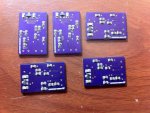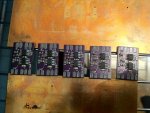Dicky Mint
Senior Member
Hi People
I'm doing a project with literally hundreds of 1206 SMD components, all under the control of a PICAXE40X2!
I have decided to invest in a DIY reflow oven!
I'm wondering what is the simplest/cheapest way of manually picking and placing 1206s?
Tweezers? Perhaps a fish tank type suction device? One of those pens that's supposed to pick & place?
I know this post is off topic but could someone with experience help, please?
I'm doing a project with literally hundreds of 1206 SMD components, all under the control of a PICAXE40X2!
I have decided to invest in a DIY reflow oven!
I'm wondering what is the simplest/cheapest way of manually picking and placing 1206s?
Tweezers? Perhaps a fish tank type suction device? One of those pens that's supposed to pick & place?
I know this post is off topic but could someone with experience help, please?


